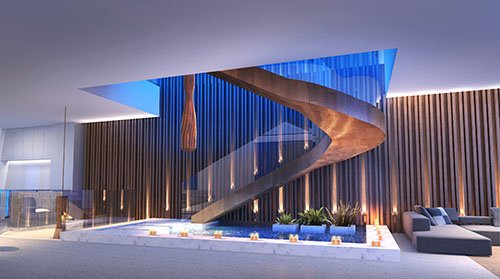What are you going to do with that?
Today I thought I'd share a little bit about one of my passions; interior design, what it's like to be an interior design student, and the design process. When I decided to go back to school three years ago my Dad was practically horrified when I told him I wanted to study interior design. Puzzled about why anyone would want an art degree, he asked, "What are you going to do with that?" He's very type A personality and couldn't really wrap his head around the idea. I explained to him that interior design is all I've wanted to do since I was 16 when I took my first design class in high school and that there is so much more to it than just choosing the right paint swatches or where to place furniture. It's no surprise to me when three years later he asks me the same question, "What are you going to do with your degree when you finish? Help people pick out furniture?" While I completely respect and appreciate the work of residential interior design I have my eyes on something BIGGER: commercial interior design.
Did you know?
Every restaurant, hospital, school, hotel, pavilion, and bus stop you've ever been in is a designed space? That is interior design. Interior designers work closely with architects and contractors to create spaces that are not only aesthetically pleasing but also functional. My ultimate dream is to do commercial interior design for upscale hotels. I love to travel and have always had a fascination with grand hotels such as the Bellaigo in Las Vegas. Although choosing paint colors and textiles are part of the job the design process is much more complex than one might think.

Interior Design Process
The interior design process is actually very long and complicated so I won't go through everything but here's a quick overview of some of the steps. The first step is to meet with your client to get an idea of their needs and wishes, any notes and sketches can be used later. Once you have an idea of what they need you can get to work. If you don't know where to start you might first do a case study, which basically means finding inspiration from existing designs to find your intent. Your intent is VERY important this is the backbone of your design and will protect it from being altered later on in the design process. Then you can begin to design. Interior designers follow a set of rules each time they design a new space; these are the elements and principles of design. The elements of design are; line, shape, direction, size, texture, color and value. The principles of design are; balance, gradation, repetition, contrast,harmony, dominance, and unity. These design tools help to create form and order within your design. Your design really comes to life when you create a model. This is important because you have to be sure that whatever you are designing can actually be built as well as showing your client what it will feel like to be inside the space you are creating for them. Once you have a model you can begin drawing your plans that will eventually be handed over to your contractor. Then and only then can you begin to think about wall coverings, flooring, textiles, furniture, etc. (Please Note: I left a lot of stuff like potentially limitations, permits, contract documents, and complying with the ADA.)

What I've learned
As a design student I have learned first and foremost that art degrees are in fact not stupid. Art is meant to push boundaries and evoke emotions. Interior design has the power to change the world. Interior design comes with a responsibility to the environment. Implementing sustainable design practices is not only encouraged but a requirement. Creating models and drafting plans takes a lot of concentration, patience, and practice. One of the things my studio professor always said was, "remember the 10,000 hour rule: it takes 10,000 hours to be good at something." This stayed with me because everyone has their strengths and drawing was definitely not mine but as long as I practice I will get better. Despite being discouraged by many I chose to follow my heart and do what I love. Just look around you the next time you walk into a public place. How does the space make you feel? Is it functional? What materials do you see? Someone put a great amount of effort into making that coffee shop feel warm and inviting. When you look up in a club and see colorful fluorescent tubes reflecting off mirrored floor, that is interior design. It is all around and it is the spaces you enjoy on a daily basis.
Questions?
Thanks for reading! If you have any comments or questions feel free to leave them below!
Hi, I came across your article when I was searching for more interior design posts on Steem. It was an interesting read and must have been tough for you to justify your desire to study design. You didn't say which year you are in or if you have graduated already. I hope you post more stories and pictures of your work, I would be interested to read about it as a interior designer.
Good luck! Natnot
I upvoted you.